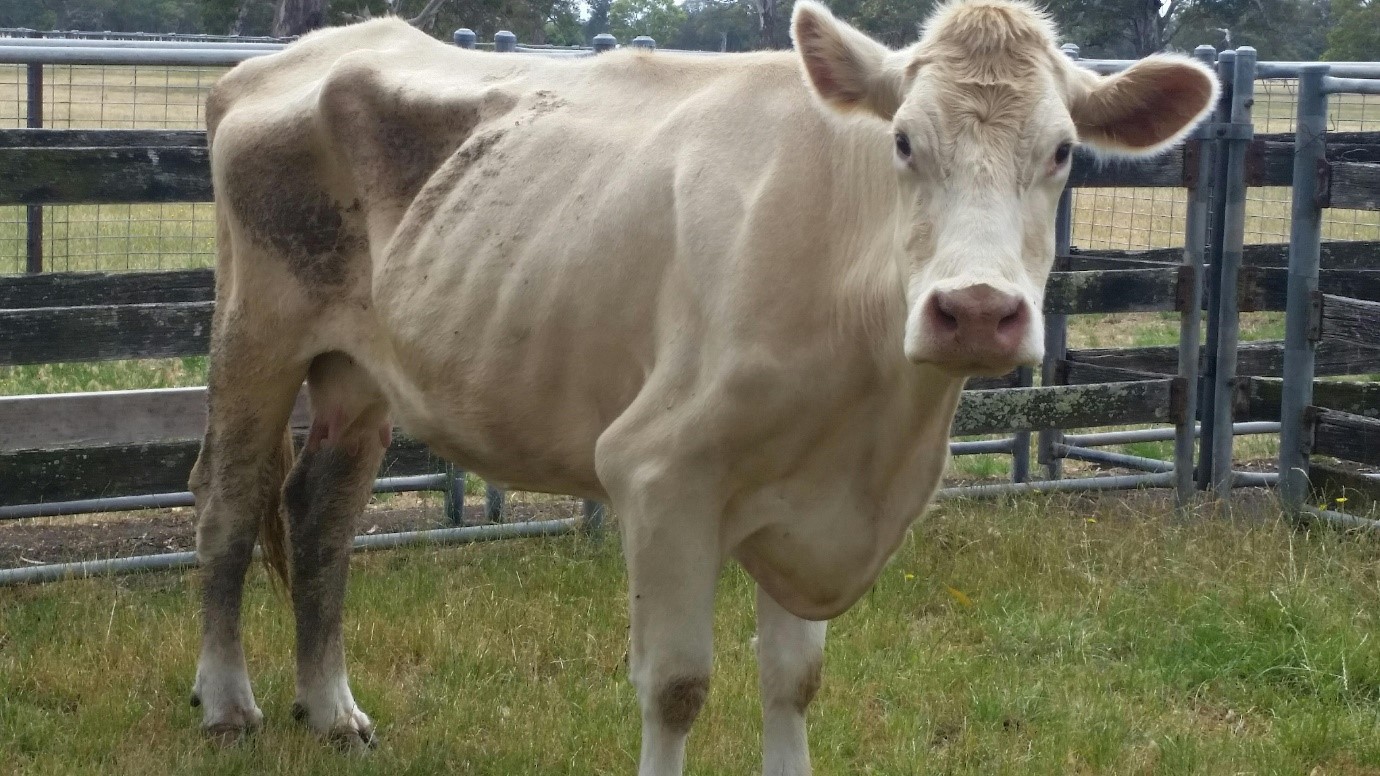Bovine Johne's disease
Johne’s disease (JD) is caused by the bacterium Mycobacterium paratuberculosis, with 2 strains dominating in Australia. One strain is seen as associated with sheep, and the other with cattle. Both strains can infect multiple species.
Johne’s disease can also affect goats, deer and alpaca.
Symptoms
The disease can have a long incubation period between infection and development of clinical signs. This period tends to be dose related, and may be many years in cattle, but a shorter timeframe with goats or deer.
Symptoms include:
- fall in milk yield
- infertility in milking animals
- diarrhoea - this can be chronic, acute, or intermittent and is unresponsive to treatments
- weight loss and emaciation.
There is no treatment for animals infected with Johne’s disease.
Spread between animals
Mycobacterium paratuberculosis can survive for over 12 months in a suitable damp or shaded areas; however, it may survive for less than 3 months in soil and faecal material in dry conditions, when exposed to light and heat.
JD is often introduced by movement of infected animals. These animals will usually appear healthy in the first instance.
Johne's bacteria are commonly spread from infected adult cattle to calves through:
- faeces (including manure spreading from an infected farm)
- colostrum
- milk.
Disease can also spread by moving non-infected animals onto contaminated pasture, or by drinking contaminated water.
Feral animals and wildlife are an unlikely source of infection in South Australia.
Managing Johne's disease
You can reduce the risk of Bovine Johne’s disease (BJD) being introduced to your farm and maintain market access. Follow these steps:
- Be informed about the BJD risk. Speak to your veterinary adviser.
- Join PIRSA One Biosecurity to develop plans that prevent entry of BJD. These biosecurity plans:
- require that all cattle introduced to your property have a national cattle health declaration with the JD section completed
- offer Property Biosecurity Management Plan Risk Assessments
- recommend that livestock is purchased from properties which are involved in an assurance program, with high levels of testing and biosecurity measures in place.
- Consider testing your beef or dairy herd to give additional assurance to purchasers that JD is not present in the herd. This involves programs like J-BAS or J-DAS (see below) – many of the higher score J-BAS and J-DAS herds were previously enrolled in the Cattle MAP program. Discuss the benefits and costs of these programs with your vet or PIRSA veterinarians.
If JD is known or suspected on your property, PIRSA can assist you to develop a management plan that will consider all options available to you.

JD in a 10-year old cow with chronic diarrhoea
Johne’s disease in beef herds
JD in beef herds is rare in South Australia, with only one or two cases being detected each year. Cases of sheep strain ('S strain') and cattle strain ('C strain') have occurred in cattle in many Australian states, including SA. However, there are usually very few clinical cases within these infected beef herds.
When purchasing or agisting cattle (including bulls), pay close attention to the Johne’s Beef Assurance Score (J-BAS) described on the cattle health declaration (CHD).
J-BAS is a guide only, and producers should always ask questions about Johne’s disease in the herd, and in other species on the property, rather than rely on the score alone. Contact PIRSA for further guidance.
To obtain a J-BAS Score, herds need to have a property biosecurity plan, and for higher levels (score 7 and 8), negative herd testing must be completed. PIRSA provides individual certificates for J-BAS 7 and 8 herds in SA.
There are many options for herd biosecurity plans, including One Biosecurity. If producers are interested in obtaining a Beef Assurance Score 7 or 8 status, they can discuss this with PIRSA or their private vet.
J-BAS and the 1Biosecurity program
In 2003, the South Australian cattle industry and government developed the Dairy ManaJD program, a voluntary herd testing program under which >90% of SA dairy herds participated.
Participating dairy herds received a Johne’s Disease Dairy Assurance Score and producers were issued with a certificate that describes their Dairy Assurance Score. The program involved producers, private vets and PIRSA in cooperation.
On 1 November 2016, the Cattle MAP program was superseded by the J-DAS program for dairy herds on a national basis.
Over 70% of SA Dairy ManaJD herds were tested negative, based on whole herd individual blood tests and maintenance tests every 2 years. Under the J-DAS program, these herds have a Dairy Assurance Score of 7 or 8. This is in contrast to some interstate J-DAS herds where scores were not based on whole herd, individual animal tests.
Producers should be aware that introducing cattle of a lower or unknown score will change their current assurance score.
On 14 August 2018, the 1 Biosecurity program was launched and incorporates elements of both the J-BAS and J-DAS programs.
For more information about J-BAS in South Australia:
- see Disease Risk Rating – Johne’s Disease in Dairy cattle (PDF 910.1 KB or DOCX 446.8 KB)
- or contact the BJD program manager.
Silirum vaccine
Silirum vaccine is useful for prevention and management of JD in cattle herds. It is available in SA, but a permit from PIRSA is needed to obtain it.
The vaccine has advantages and disadvantages that producers need to be fully aware of, if considering using this vaccine. Contact the BJD Program Manager for details.
Note: use of the Johne’s disease sheep vaccine in cattle may result in adverse effects and is not permitted under the Agricultural and Veterinary Products (Control of Use) Act 2002. The sheep and cattle vaccines have differing formulations and adjuvants.
Contact
Jeremy Rogers – Bovine Johne’s Program ManagerPhone: (08) 8539 2110
Mobile: 0427 608 133
Email: jeremy.rogers@sa.gov.au
